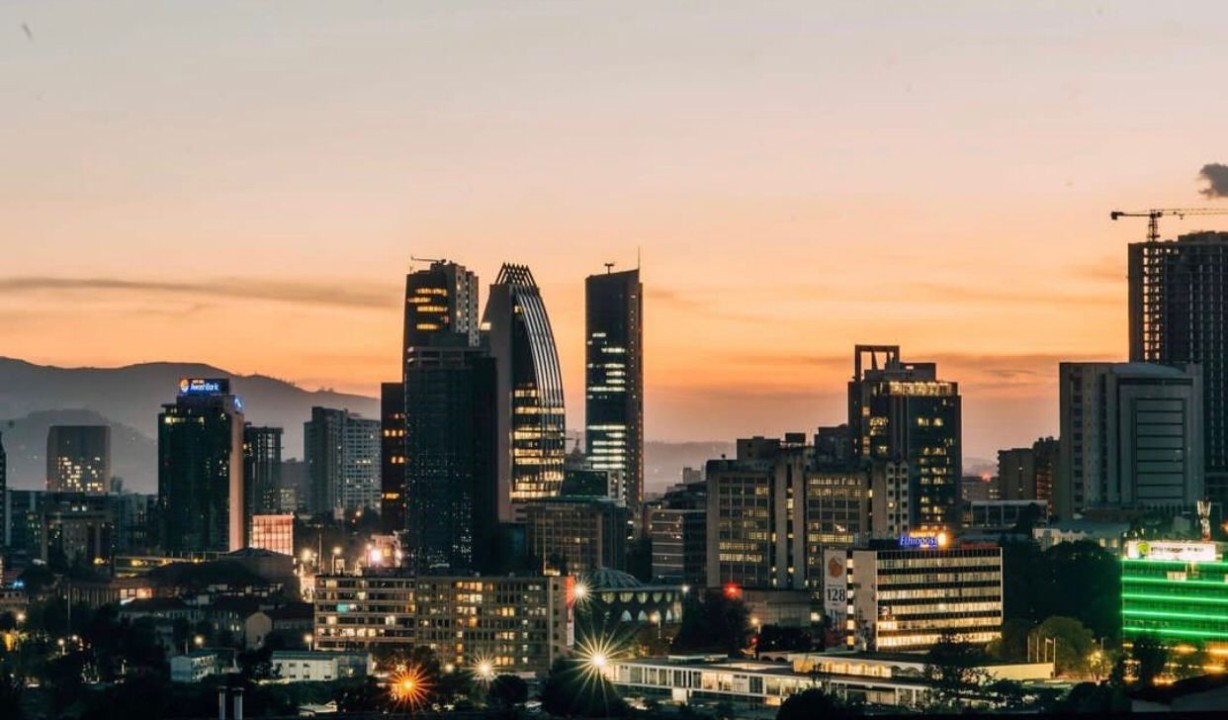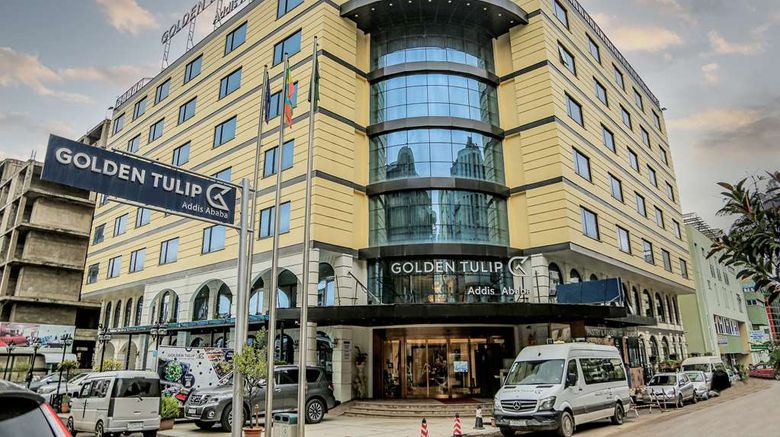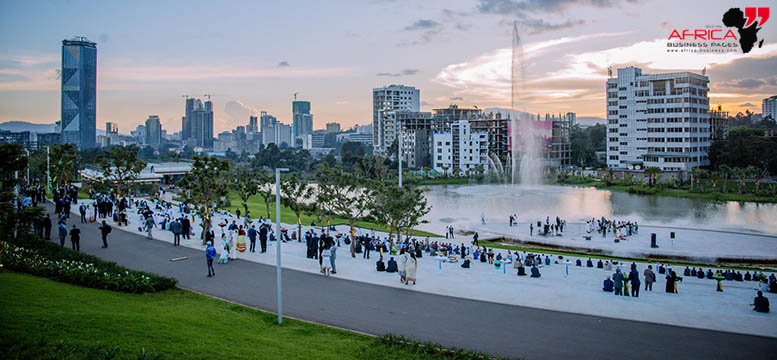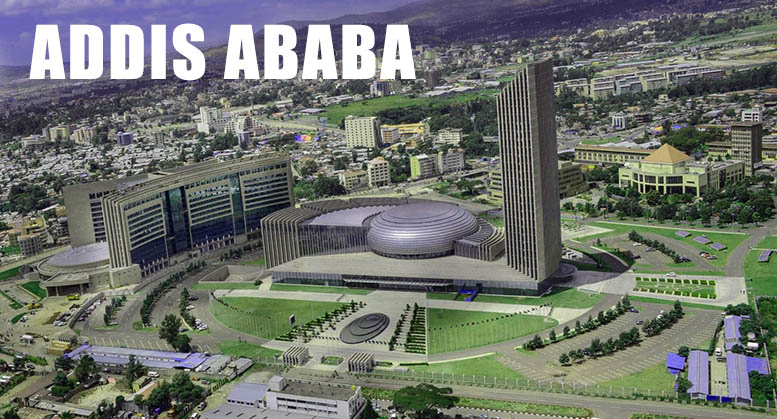Addis Ababa is the capital city of Ethiopia and the African Union and is often called the "African Capital" due to its historical, diplomatic, and political significance for the continent. Located in the foothills of the Entoto Mountains and standing 7,726 feet (2,355 meters) above sea level, it is the third-highest capital in the world. It is located in the geographic center of the country. When the city was at risk due to a shortage of firewood in the early 1900s, an ambitious campaign to plant Eucalyptus trees imported from Australia in and around the city essentially secured its lasting location. Today, a greenbelt of forests and semi-subsistence cultivated land surrounds the city.
This historically significant city in its enchanting mountain setting is recognized as one of the world's most problematic, yet fascinating and beautiful cities. Its country's border war with Eritrea and unsteady relationship with Somalia have put a heavy burden on Addis Ababa as it has become a center for refugees whom it cannot support. Rapid population growth has created slums. Some areas have 200 people per acre, living in dilapidated attached houses built without regard to sanitation or drainage. In most areas, the rich and poor live as neighbors, though many of the wealthiest people live in the southeast and southwest sections of the city.
Addis Ababa is an important administrative center not only for Ethiopia but also for the whole of Africa. The headquarters of the African Union and the United Nations Economic Commission for Africa can be found in the city. The United States and the European Union have two delegations in Addis Ababa, one for bilateral relations with Ethiopia and one for the African Union. Ethiopia and its capital city have become a source of pride for the Pan-African movement due to its indigenous character and the legacy of the Abyssinian Empire.
Geography
This city's name is sometimes spelled "Addis Abeba," which means "new flower" in the Amharic language. Empress Taitu named the city, which is also known by the Oromo language name “Finfinnee.” Other parts of the city were called hora Finfinnee, meaning "hot springs."
The city is located at the southern foot of Mount Entoto, in the Entoto Mountains, at an elevation of about 8000 feet (2440 meters) above sea level, on a plateau that is crossed by numerous streams and surrounded by hills and mountains, in the geographic center of the country. Mount Yarer overlooks the city from the east and Mount Wochecha from the west.
The Entoto Mountains are home to numerous churches, a museum of religious costumes, and a park. Ecologically, Addis Ababa is a grassland biome, which is a climatically and geographically defined area of similar communities of plants, animals, and soil organisms.
The city possesses a complex mix of highland climate zones, with temperature differences of up to 10°C (50 °F), depending on elevation and prevailing wind patterns. The high elevation moderates temperatures year-round, and the city's position near the equator means that temperatures are very constant from month to month. The temperature in January ranges from a high of 68°F (20°C) to a low of 53°F (12°C).
The area of the city increased from 85.73 square miles (222.04 square kilometers) in 1984 to 204.7 square miles (530.21 square kilometers) in 1994.
The Entoto Mountains start among the northern suburbs. Suburbs include Shiro Meda and Entoto in the north, Urael and Bole (home to Bole International Airport) in the east, Nifas Silk in the south-east, Mekanisa in the south, and Keraniyo and Kolfe in the west.
Demographics
Addis Ababa had a population of 3,147,000, according to the 2007 census, consisting of 1,511,000 men and 1,636,000 women, and an eight percent annual growth rate. The city is home to 23.8 percent of all urban dwellers in Ethiopia and has an estimated density of 5936.2 per square kilometer. It is the 106th largest urban area in the world, according to Demographia.
Almost all Ethiopian ethnic groups are represented in Addis Ababa due to its position as the capital of the country. Close to half of the population are from the ethnic group Amhara, while the remaining population is predominantly split among the groups Oromo, Gurage, and Tigray.
About 82 percent of the population are Orthodox Christians, 12.7 percent Muslims, 3.9 percent Protestants, and 0.8 percent Catholics, while the remaining 0.6 percent are followers of other religions, such as Hindus, Jews, Bahá'ís, and Agnostics.
Addis Ababa University was founded in 1950 and was originally named "University College of Addis Ababa," then renamed in 1962 for the former Ethiopian emperor Haile Selassie I who had donated his Genete Leul Palace to be the University's main campus in the previous year. It received its current name in 1975. Although the university has six of its seven campuses within Addis Ababa (the seventh is located in Debre Zeit, about 45km), it also maintains branches in many cities throughout the country. It is the home of the Institute of Ethiopian Studies and the Ethnological Museum.
The city also has numerous private colleges including Admas College, Ethiopian Civil Service College, and Unity University College.
GALLERY






